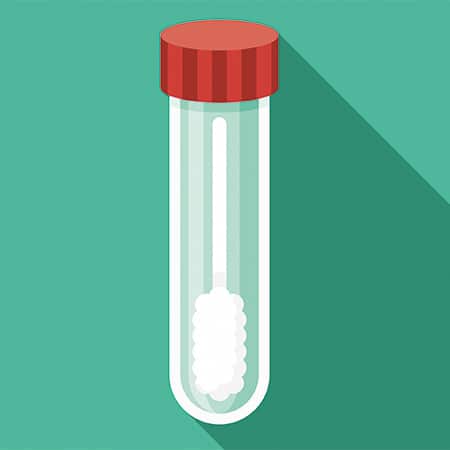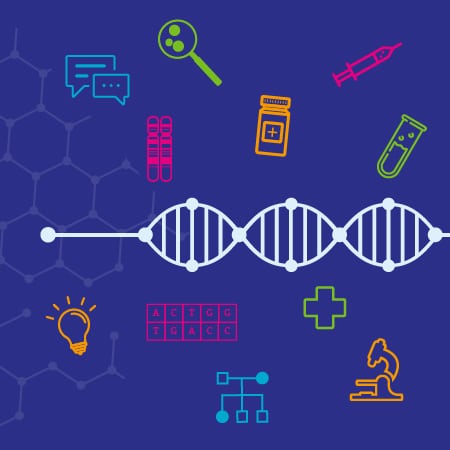In this teaching scenario, John explains the complications and challenges he faced when receiving unexpected results from direct-to-consumer testing
A man talks about receiving a genomic test as a gift and his initial excitement at being able to learn more about his ancestry and traits. John goes on to explain that these expectations were not met, with the test providing more questions than answers and offering concerning information he had not anticipated.
Read John’s story below and use the teaching moments and discussion points to design your teaching session.
AT-A-GLANCE
Clinical focus: General health, neurology
Nursing activities: Communication, management, ongoing care
NMC platform and outcomes: 1 (1.8, 1.11, 1.13, 1.14); 2 (2.2, 2.4, 2.7, 2.8, 2.9, 2.10); 3 (3.2, 3.5, 3.12, 3.15); 4 (4.2, 4.3, 4.5); 7 (7.8)
John’s story
Expectations of testing
1 I’ve always been interested in finding out about my ancestry and have used websites in the past to research my family tree, going back several generations. So, when one Christmas I was given an ancestry DNA test as a present, I was quite excited. On further reading, not only would I find out about my ancestry, but this test also provided information about my health and certain traits, ranging from bunions to fear of public speaking!
2 Shortly after Christmas, I had to visit my local GP practice to give some blood as part of my routine health check. I was chatting away to the nurse taking the blood and mentioned the kit, interested to get their take. They said how amazing it is that you could get all that from just looking at your DNA and mentioned that they knew someone who had taken one and all the fascinating things they found out, not only about their ancestry but also their health, which led to them improving their lifestyle. What I didn’t get from them was how reliable these tests were and what I should do if something of concern was found that might need following up. At the time, I came away feeling that their attitude was that I should do the test – after all it would be interesting if nothing else. Who wouldn’t want to know these things?
Receiving results
3 All the test required was a saliva sample, so I sent it off. In hindsight, I wish I had spent more time reading not just the blurb on the website but also around the whole direct-to-consumer testing thing, but my curiosity got the better of me.
4 It took about eight weeks for my results to come back, and I remember feeling some anticipation when I saw the email in my inbox. I skimmed through the rather long report straight to the ancestry part, looking at my DNA composition, then my parents’ likely lineage, then finishing it off with neanderthal ancestry. I really enjoyed this part.
5 Then, I began looking at the other information in the report. There were results on the consistency of my ear wax and whether I liked coriander: things I really didn’t need a test to answer. The next part of the report covered over 30 different health conditions and diseases: from eczema through to cancer. For each, the report stated whether or not I had a change in my DNA that increased the risk of developing them. Seeing the list of all these different conditions – some more severe than others – I did begin to feel anxious. Finding out if you are part neanderthal is fun, knowing you may have a risk of developing breast cancer really doesn’t have the same appeal. I hadn’t even considered these implications when I sent my sample off.
Unexpected findings
6 To my shock, the test identified a change in a gene called APOE. According to the report, the variant increased the risk of developing late-onset Alzheimer’s disease. I was numb. My mother had dementia, so I was all too aware of the implications, not only for me but also my family. What do I do now, I thought to myself?
7 I searched through the supporting documents to try and make some sense of what this risk meant. They stated that just because the variant had been identified didn’t necessarily mean I would develop the condition. However, with Alzheimer’s in the family, this didn’t reassure me. The advice from the company was to contact a medical professional if I was concerned about my results and that my GP would be the best place to start.
Seeking answers
8 I thought back to my conversation with the practice nurse and wondered whether I would have gone through with the test if they had responded differently or at least opted out of the health part. There were many questions I wanted answered and some clarity that the company just didn’t provide. Should I begin planning for the worst? Can I reduce the risk through changes to my lifestyle? Would it affect things like life insurance? Are my children at risk? I decided to book an appointment with my GP with the hope of addressing these concerns.
9 Thankfully, my GP was very understanding and had done some reading around the reliability and limitations of these direct-to-consumer kits ahead of my appointment. They emphasised that just because I have the variant this doesn’t mean I will develop the condition and not to take the findings at face value. The variant increases risk but is not the cause. They explained that there were currently no treatment or management strategies in place based on genetic findings as the evidence was still being collected.
10 Despite the conversation with my GP, the fact I now know this information has bought with it anxiety about what my future holds. It hasn’t changed the way I live my life, but I will voice my thoughts to anyone I speak to who may be considering taking one of these tests. They are all too often marketed as empowering – a way to take your health into your own hands – with the real implications perhaps not as well communicated or even muted.
Educator touchpoints
Teaching moments
Paragraph 1 | What type of direct-to-consumer tests (DTC) are available and what information do they offer?
Paragraph 5 | What can changes in our DNA tell us in terms of health, physical characteristics and ancestry, and how reliable is this information?
Paragraph 7 | Are there current NHS guidelines on supporting individuals who have taken a DTC test?
Discussion points
Paragraph 2 | Did the practice nurse give balanced advice? What could they have said? Should they have said anything?
Paragraph 3 | Why do you think John didn’t read all the information about the type of results he would receive?
Paragraph 6 | Discuss the idea of ‘increased risk’. What does this mean?
Paragraph 7 | Was contacting a GP the right course of action for John to take, considering the test was performed outside of the NHS?
Paragraph 8 | Where else could John go to get answers to some of his questions?
Paragraph 9 | How do you think John felt when he discovered that there were no treatment or management strategies available?
Paragraph 9 | Did the GP provide enough support to John?
Paragraph 10 | Are DTC tests harmless or should they be better regulated?
Further learning
FOUNDATION KNOWLEDGE
A blog article exploring the complicated reality of this increasingly popular and available test
10 minutes
Guest author Dr Rachel Horton explains some of the key points clinicians need to know about DTC genetic testing
10 minutes
Tips and tools for communicating with patients about genomics
30 minutes






